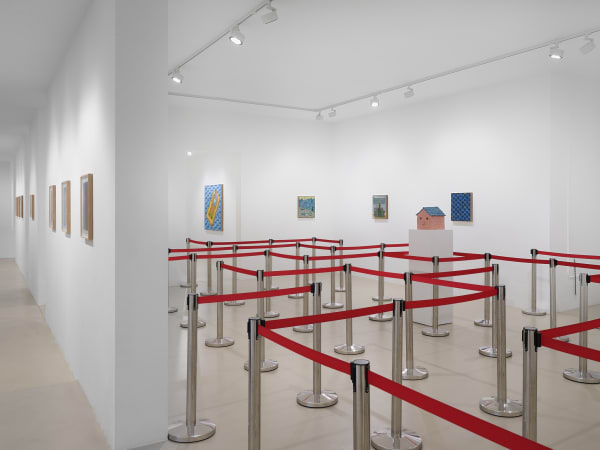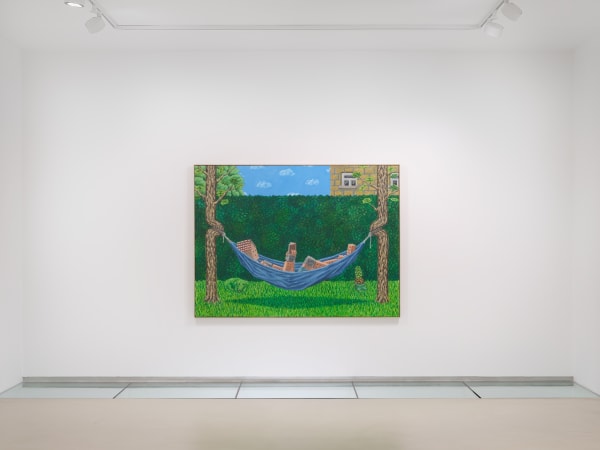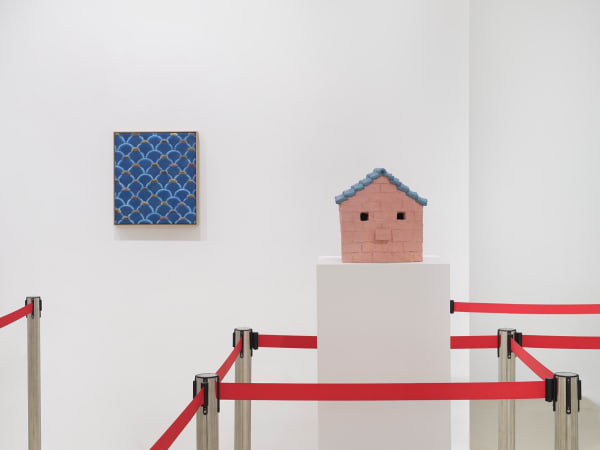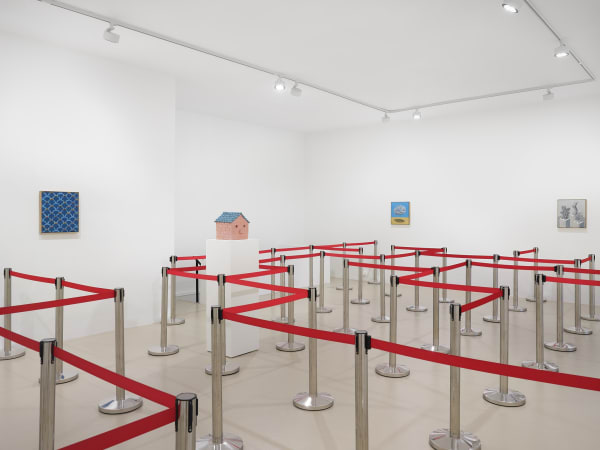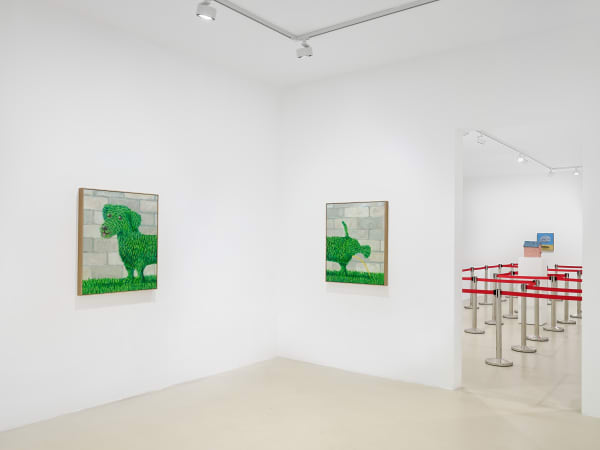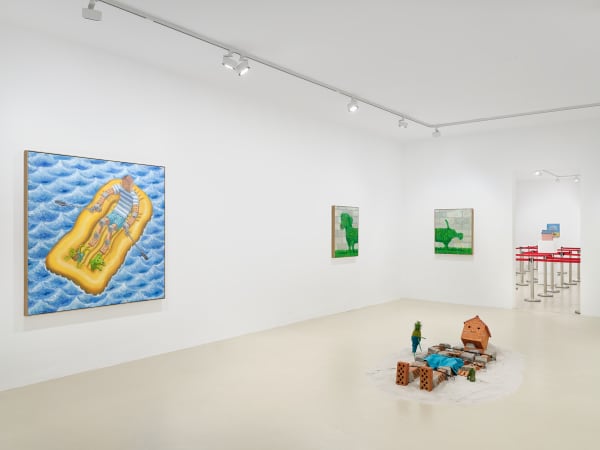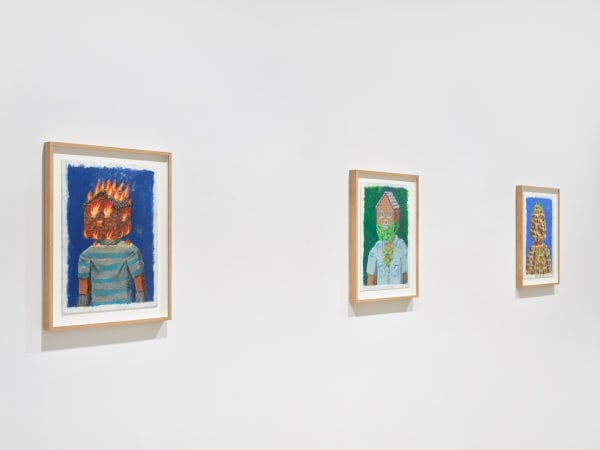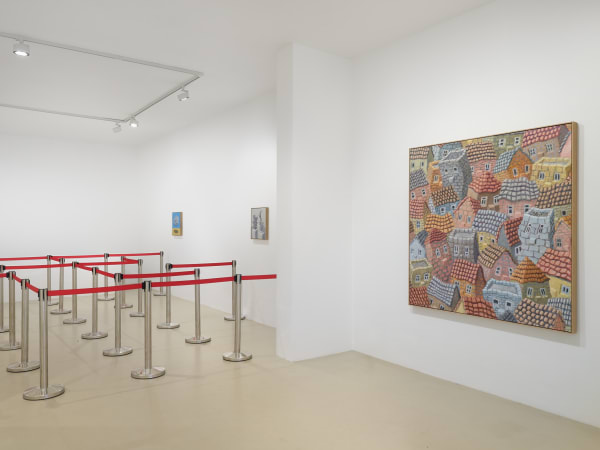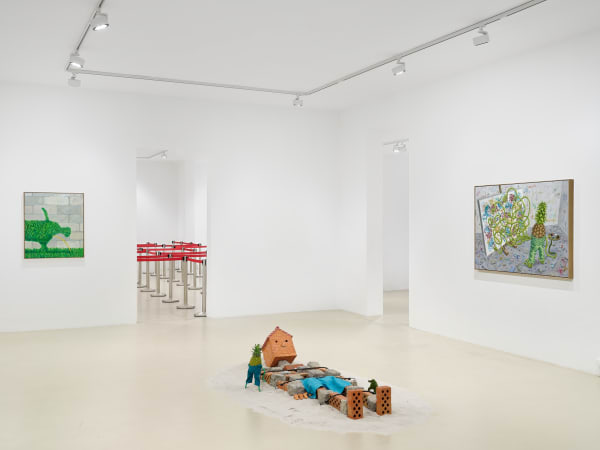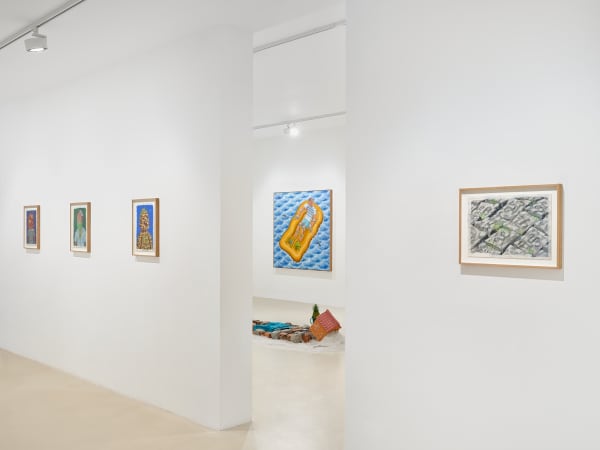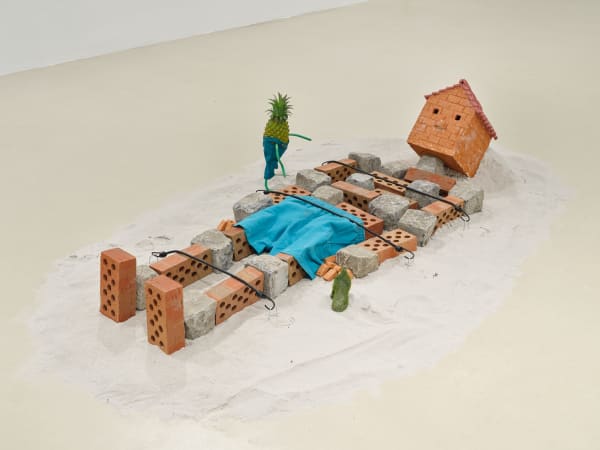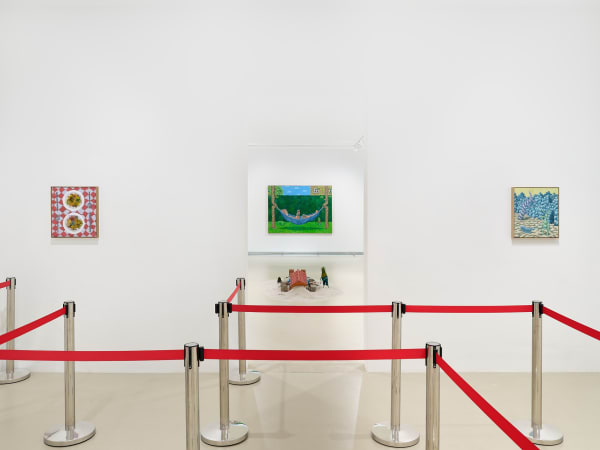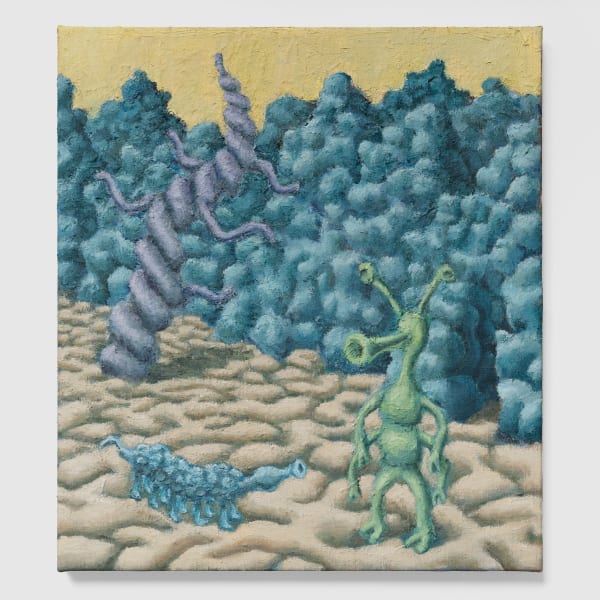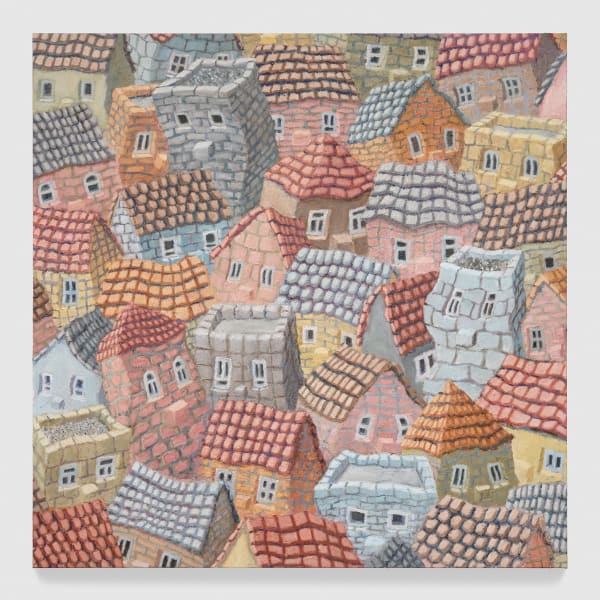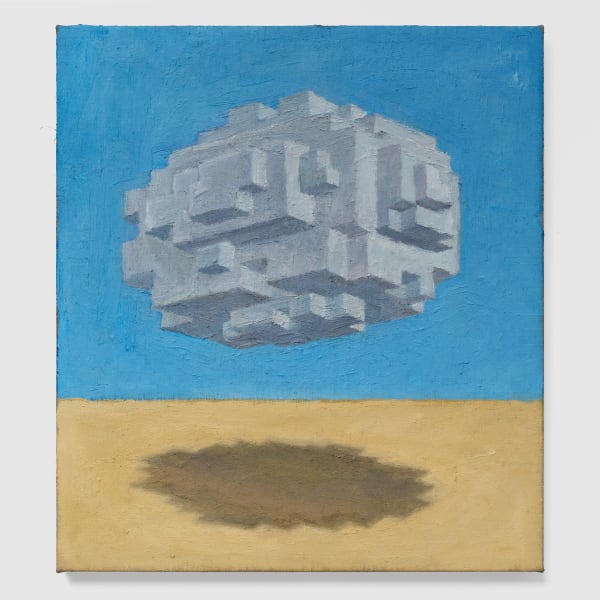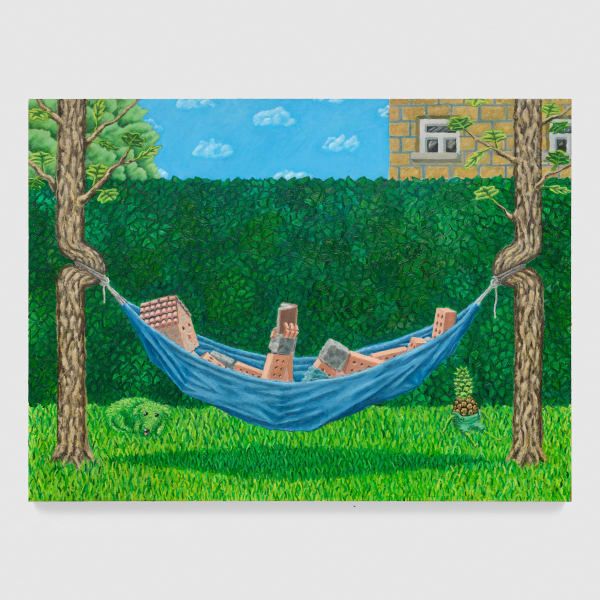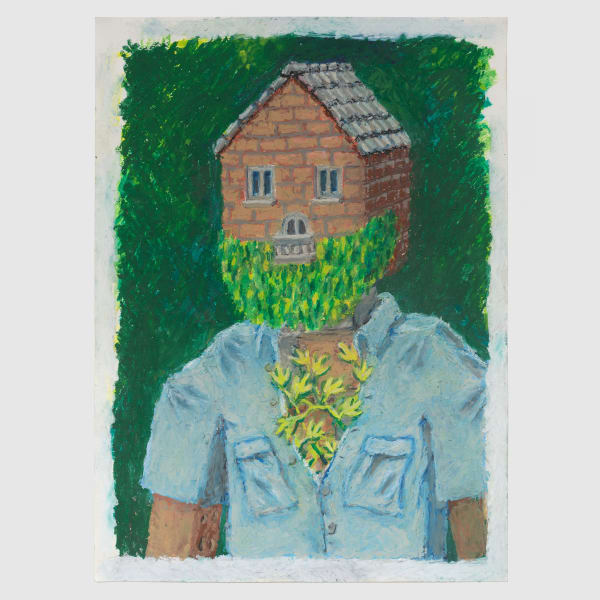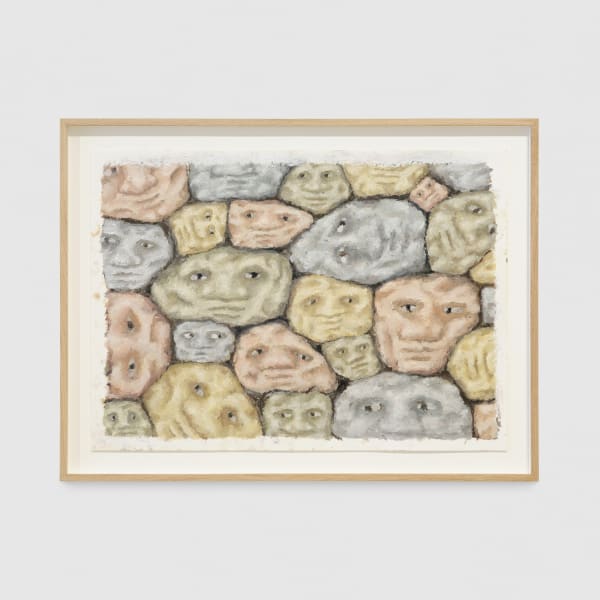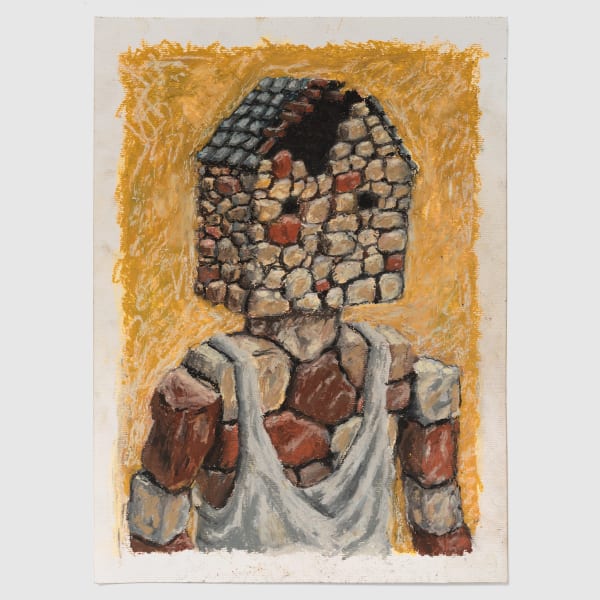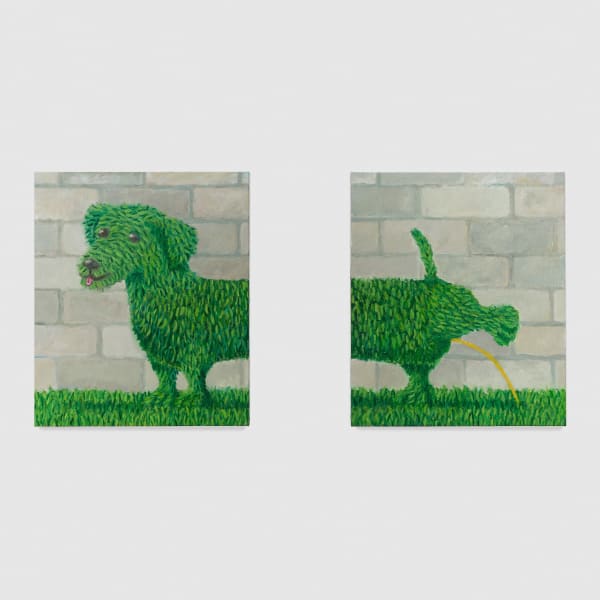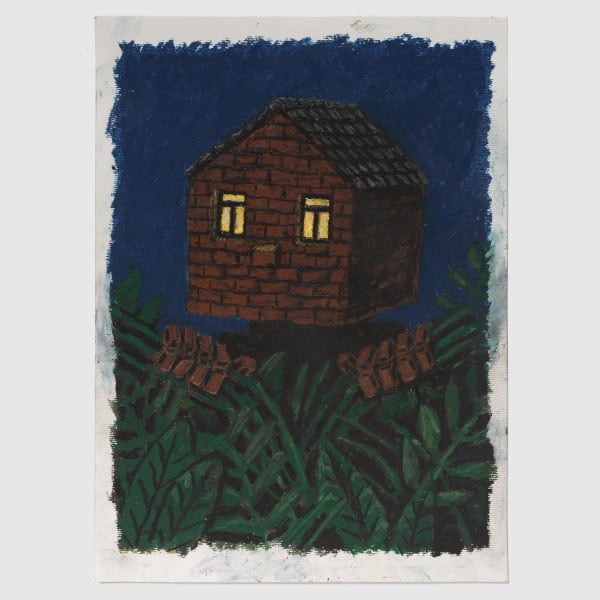Floris Van Look: De Goede Richting
Past exhibition
Overview
KETELEER GALLERY is very pleased to present De Goede Richting (The Good Direction), a solo exhibition by Floris Van Look (°1990. Antwerp, Belgium). Floris Van Look’s third solo exhibition with the gallery consists of an entirely new series of paintings, sculptures and an in situ installation.
Where Van Look’s previous exhibition focused solely on anthropomorphic ice cubes embarking on journeys throughout the world, this exhibition marks a return to his old working method: intuitively exploring various topics, influences and painting techniques simultaneously. He once again drew inspiration from literature and his immediate daily environment, particularly the things that catch his eye on his way to his studio.
Van Look allowed free associations and formal experiments to spontaneously blend into a visual world teeming with fantastical creatures. However, for him, the painting process is the real protagonist, and the enigmatic anthropomorphic characters serve as the symbolic incarnation of his formalistic but also philosophical questions. Since the beginning of his artistic practice, Van Look has struggled with abstraction, the holy grail of simplification, of pictorial distillation, but also a realm of endless freedom and possibilities. He continuously fails to let go of figuration, as an anchor. But this too gets incorporates into the works. For De Goede Richting Van Look used surrealist techniques to explore the boundaries of figuration and search for his own meaningful direction.
Bricks, cobblestones and boulders welcome us with puzzling stares, a pineapple is wearing overalls and a dog has turned into a charming grass-creature wagging its tail. A bit further, we see a tree that has grown in right angles (Fascist Tree) and a cloud composed of cubes (Fascist Cloud). Van Look casts all logic aside to let surrealism run wild, while also consistently exploring elements of abstraction. In Abstract Exhibition he even literally puts ‘abstraction’ on pedestals and in Bliep Bloep we see a formal experiment in which only curved lines were used.
In Narrenschiff 1, whose title was inspired by the eponymous satirical allegory by Sebastiaan Brant (1494), the waves were stylised into a geometric pattern and the whole is executed in isometric perspective; a paradoxical way of eliminating linear perspective while still displaying volume. Geometric patterns are woven throughout the exhibition, in Theater View, the house heads in Crowdy City, the stone faces, the stylised hedge in Lecture Jardin, the pineapple’s ‘skin’… and all sprouted from the design from which this new series emerged: the brick pattern that accompanies Van Look on his daily walks.
The main character in this exhibition is the brick man, a recurring motif in Van Look’s previous works, symbolising the fusion of artificial and organic elements and representing his ongoing exploration of the balance between figuration and abstraction. Joining the brick man this time are two new companions: a grass Dachshund and a pineapple, embodying a middle ground between the more artificial brick man who still appreciates structure and the hyper-organic dog. In the reclining sculpture, Gulliver Stranded, the brick man assumes the guise of the bound Gulliver in the land of the Lilliputians (Gulliver’s Travels, J. Swift, 1726), a realm governed by obsessive displays of authority and trivial rules.
Display of authority, but also the contradiction between the artificial and the organic, ingeniously return in the space-filling installation De Goede Richting. Instead of wandering intuitively and randomly through the space, the visitors find their freedom abruptly restricted by a predetermined path marked by queue barriers. With this labyrinth, the artist not only dictates the pace, sequence and selection of the works viewed but also highlights the freedom of movement afterwards. The exhibition’s overarching theme revolves around the question of freedom. Similar to how Jonathan Swift uses Gulliver’s travels through different countries to raise questions about the type of morality a society requires, and the ideal form of governance, Van Look employs various artistic techniques and styles to explore how much freedom is desirable, how one should navigate it, and what impact this has on individuals, or artists.
Van Look’s quest is ultimately one of simplification but also acceleration of the painting process, perhaps most poignantly depicted in Big & Fast, where the pineapple is given a cluster of arms to create an abstract painting, and has literally and figuratively landed in chaos. But also in Burned Out Painter, we see the pineapple struggling with some very linear thoughts. Despite Van Look's tendency to make things more challenging for himself in his quest for simplification, he embraces this contradiction too and never allows the desired outcome to dictate his path. Instead, he allows the surprising organic process to guide him.
Lauren Wiggers, 2024.
Installation Views
Works
-
 Floris Van Look, Abstract Exhibition, 2024
Floris Van Look, Abstract Exhibition, 2024 -
 Floris Van Look, Big & Fast, 2024
Floris Van Look, Big & Fast, 2024 -
 Floris Van Look, Bliep Bloep, 2024
Floris Van Look, Bliep Bloep, 2024 -
 Floris Van Look, Burned Out Painter, 2024
Floris Van Look, Burned Out Painter, 2024
-
 Floris Van Look, Burning House, 2024
Floris Van Look, Burning House, 2024 -
 Floris Van Look, Crowdy City, 2024
Floris Van Look, Crowdy City, 2024 -
 Floris Van Look, Crying House, 2024
Floris Van Look, Crying House, 2024 -
 Floris Van Look, Fascist Cloud, 2024
Floris Van Look, Fascist Cloud, 2024
-
 Floris Van Look, Fascist Tree, 2024
Floris Van Look, Fascist Tree, 2024 -
 Floris Van Look, Head Study, 2024
Floris Van Look, Head Study, 2024 -
 Floris Van Look, Hutsepot, 2024
Floris Van Look, Hutsepot, 2024 -
 Floris Van Look, JFK, 2024
Floris Van Look, JFK, 2024
-
 Floris Van Look, Lady House, 2024
Floris Van Look, Lady House, 2024 -
 Floris Van Look, Lecture Jardin, 2024
Floris Van Look, Lecture Jardin, 2024 -
 Floris Van Look, Middle Aged House, 2024
Floris Van Look, Middle Aged House, 2024 -
 Floris Van Look, Mountain Man, 2024
Floris Van Look, Mountain Man, 2024

